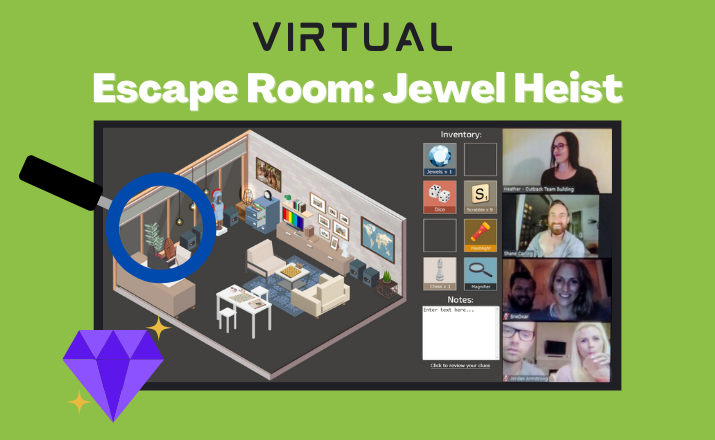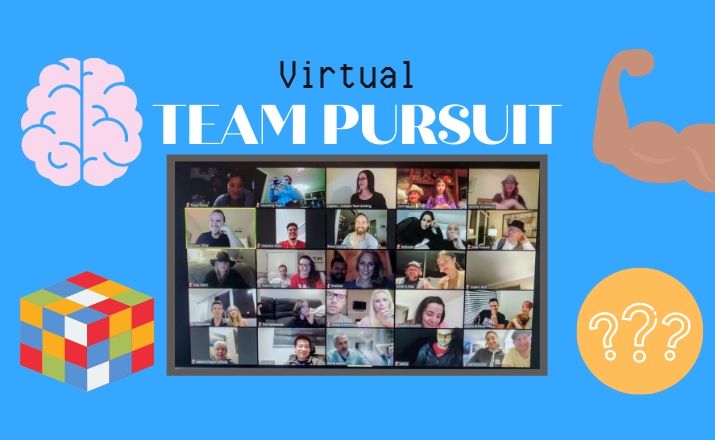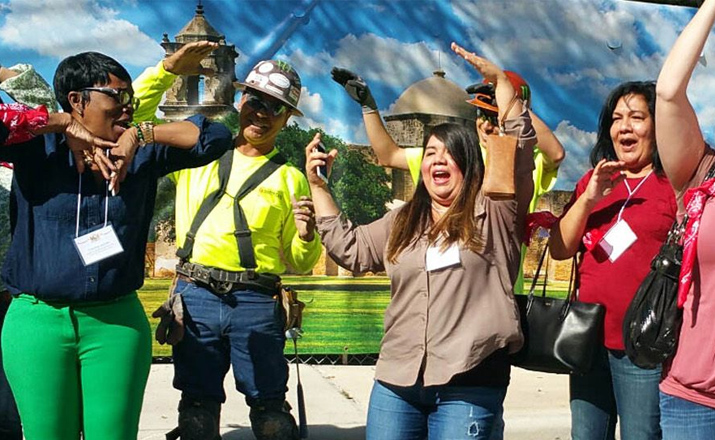6 Business Leaders Share Their Definitions of Company Culture [with Examples]

As the professional world changes and evolves, so is the definition of company culture. We spoke with six business leaders to learn their definitions and examples of company culture for 2022 and beyond.
With the professional world evolving at a rapid rate, many traditional workplace norms are changing before our very eyes—including our definitions of company culture and the ways in which we approach it.
Business leaders are being left to adapt and adjust on the fly in order to maintain the most productive, efficient, and engaged teams possible. And, as remote work becomes the norm, maintaining strong company culture is one of the most vital and challenging tasks on every leader’s list of priorities.
But how can we define company culture in the “new norm,” let alone ensure it remains strong?
We tapped into our network of business leaders and asked them five questions about their company culture definitions and examples for 2022 and beyond.
Here’s what they had to say.
- How Do You Define Company Culture?
- What Makes a Strong Company Culture?
- How Do You Measure the Strength of Your Company Culture?
- What Do You Do as a Leader to Improve Your Company Culture?
- What Are Some Misconceptions or Company Culture Examples That Are Outdated?
- Team Building and Training Programs to Improve Company Culture
How Do You Define Company Culture?
There’s no one-size-fits-all formula for company culture. So, how do these business leaders view it?
Multifaceted and All-Encompassing

“For me, company culture is what is normalized, accepted, and celebrated,” explains Joe Teo, CEO & Co-Founder at HeyOrca. “It touches everything, from the ‘feel’ of the company to how we make decisions and treat one another.”
Embodies What the Company Stands For

Matthew Tsang, Partnership Cultivator and Co-Founder at AndHumanity, has a clear and concise definition of company culture: “We define company culture as a manifestation of our VMVs (Vision, Mission, and Values).”
Intrinsicly-Focused

Melanie Borden, Managing Member at Melanie Borden, LLC, says company culture starts intrinsically: “I would define company culture as how your business permeates from the inside out.”
How People Treat Each Other

“When we talk about our company culture, we’re referring to the norms of behaviors we exhibit towards each other, what we expect, and how we treat people we work with,” says Rebecca Lewis Smith, Co-Founder and Director at Fountain. “Our belief is that every group of people has a culture—whether it’s intentionally built or simply left to happen. Our focus on our culture grew out of a time of rapid growth when we realized that if we didn’t actively work to keep everything we loved about our way of working, we risked losing some of the magic that had led to that growth. Since 2017, our culture has been a core focus as we have continued to expand.”
More Than Just Ping Pong and Beer

“For us, company culture is more than just ping pong and beer,” says Erin Girard, People & Talent Lead at Spare. “It is having a shared mission that we are committed to and consistently working towards.”
An Internal Brand

“I think of company culture as your internal brand or the brand of your employees,” says Graham Ahner, Team Director at KlientBoost. “It’s how your team members feel about working at your company and what they tell their family, friends, and network about. It’s the benefit (or lack of) that they get from their work and coworkers and the level of passion they have to share that with people, for better or worse.”
What Makes a Strong Company Culture?

The definition of strong company culture will vary greatly depending on the type of business, the number of employees, the industry the organization is in, and whether the team works together in-person or remotely.
Remains Consistent and Unique
“I believe a strong company culture is one that is consistent and unique,” says Joe. “It’s consistent, meaning we do what we say. And it’s unique, meaning we have a point of view to what we celebrate and treasure.”
Ensures Everyone Is Heard
“Everyone is heard and has a voice that matters,” says Matthew. “Folks are encouraged to share their own personal desires and the company adapts to them. Everyone pointing in the same direction; a consistent practice and reinforcement of our VMVs.”
Centers Around Being Support-Based
Melanie explains, simply, “A strong company culture is made up of internal support, resources, communication, and empowerment for personal growth.”
Focuses on Openness, Trust, and Autonomy
“We don’t believe that there is a ‘one-size-fits-all’ solution to company culture,” says Rebecca. “The strength of Fountain’s culture lies in openness, trust, and autonomy. We ask our colleagues to be accountable, and in return, we give them freedom and ownership of their work lives. We also have a highly supportive culture, with people consistently going out of their way to help and elevate their colleagues. Our internal coaching program sees colleagues playing the role of coach to each other, which in turn embeds aspects of coaching into our culture beyond those sessions.”
She adds, “Our culture has evolved from our values, and relies not only on our commitment to preserving and evolving it, but also on the people that we hire and how they experience the importance of our values when they join the team.”
Hinges on Goals
“Strong goals help us build a strong culture,” says Erin. “When everyone feels passionate about the impact we’re having on the world, we can connect on a deeper level.”
Prioritizes Inclusiveness from Top to Bottom
“First and foremost, it’s the ability to be yourself and still have an impact on the company’s vision and values,” says Graham. “Beyond that, it’s not necessarily material things. There has to be care and respect for each other at every single level of the company, from the C-Suite to the intern. It has to be something that every employee can embody, despite having different responsibilities or pay. However, the higher someone’s title is, the more crucial it is that they do represent the culture.”
He adds, “On a more tangible level, some of my favorite examples of strong company culture are investing in personal growth as a company as well as in personal health and fostering the ability to feel comfortable giving professional feedback and praise, among many others.”
How Do You Measure the Strength of Your Company Culture?

Unless you can measure the strength of your company culture, how can you possibly know if it’s in a good place or if it needs improvement? But on the flip side of that coin, how do you measure something that’s seemingly so intangible?
Qualitatively
“I think you can ‘feel’ if your culture is healthy or toxic,” explains Joe. “When things are healthy, coming to work will feel energizing and motivating.”
He adds, “Quantitatively, we measure the health of our company through our quarterly Employee Engagement Survey, or what we would like to call ‘Orca Engagement Survey’.”
Living the Company’s VMV’s
“We embed our Vision, Mission, and Values into your systems and processes and publicly reinforce and reward when it happens,” says Matthew. “We do this through our team reward systems and how we communicate with each other as well as all our meetings. This includes monthly team meetings, our one-on-one meetings, our daily standing meetings, and more. Everyone has a voice and can share opinions that will actually affect how the business is run.”
Togetherness and Commonality
Melanie explains, “Strength in culture is being together as a team, understanding each other, and working towards the same goal of helping our clients to succeed.”
Metrics and Feeling
“On one level we have a lot of metrics in this area,” explains Rebecca. “This includes wellbeing scores, coaching feedback, ways to map collaboration throughout the agency, and quarterly engagement surveys. As a data-driven digital marketing agency, it’s easy for us to rely on these metrics to assess the culture. But culture is more like a relationship than a spreadsheet. How do you measure the strength of a friendship?”
She elaborates, “We have a dedicated People & Culture team who regularly assess how our culture is looking and feeling. We take feedback from team members regularly and aim to keep an open dialogue about the improvements that we’re working on and what else they would like to see.”
Engagement
“We measure our company culture through engagement,” says Erin. “When we have buy-in and excitement about initiatives, changes, new products and events, we know we have a solid foundation.”
Feedback, Measurement, and Communication
“We measure the success of our company culture in a few ways,” says Graham. “One way is monthly anonymous gusto surveys. This tells us how people are ranking their agreeance with different topics, like management, their tech, autonomy, coworkers, accountability, and more, but also about whether or not they’re happy to be working here.”
He continues, “We also host HCIBBFY meetings—short for How Can I Be Better For You. Every employee has this meeting once a month where we ask, literally, how we can be better for them and what kinds of things would make them leave. We also use Lattice to ask for and monitor every employee’s sentiment each week from terrible to great. And finally, we use our Net Promotor Score for client-facing reviews, but if it starts to go up or down, there is usually a tie to how strong our team morale and overall culture is at the time.”
What Do You Do as a Leader to Improve Your Company Culture?

Creating a top-tier company culture isn’t a set-it-and-forget-it endeavor. It’s something that usually needs to be worked on proactively.
So, how do these business leaders work to improve their company culture on an ongoing basis?
Being Introspective
“Improving company culture is always a daily challenge,” admits Joe. “I think first and foremost, I need to be introspective and ask myself if I’m adhering to the standard of our culture, and if I’m consistent with what I say is important to us as a company. Outwardly, I make sure we have good feedback systems in place, from one-on-ones to weekly company All-Hands Meetings and Quarterly employee surveys. A company is a product, and the culture is the code that runs it. Being deliberate is something that I’ve learned is so, so important.”
Never Ignoring the Little Things
“Nothing that’s ‘off’ is ever too small to address,” says Matthew. “When it isn’t happening with someone when it should, privately approach with curiosity, rather than judgment.”
Prioritizing Communication, Compassion, and Patience
“Since I started my business, there are three things I have felt were important to everyone,” says Melanie. “From our team to our clients and vendors, we believe in communication, compassion, and patience. Not everyone will come to the table with the natural ability to convey all the above, so as leaders we must have the ability to tap into these tools to teach our team. It flows from the top down.
She adds, “I know that if my team is having external conflict or personal challenges, they are not going to perform on our projects or be able to bring their level of greatness to the table for our clients. Having an open professional dialogue is important. When you work for a company that not only understands that life moments happen but is supportive when moments happen out of our control, it changes the internal culture narrative.”
Actively Considering Cultural Decisions
“As leaders, we consider the impact on our people and culture in each decision we make,” explains Rebecca. “The value that we place on our culture, for so many reasons, means that we treat it with the same respect that we treat other aspects of business performance. This doesn’t mean, of course, that we are always able to prioritize our culture above all else. Business realities can lead to tough decisions. But in actively considering the cultural implications, we do our best to maintain and grow our culture in the face of those tougher realities as well.
She continues, “By treating our culture as something that we treasure, by recognizing that work on our culture is never ‘done’ but always evolving, we make sure that it remains one of the defining factors of Fountain as we grow.”
Listening, Understanding, and Being Honest
For Erin, it comes down to three simple things: “I think the most important thing we can do as leaders is to listen, understand, and be transparent.”
Being Accountable as a Leader
“I hold myself accountable to our values and hold others accountable to our values,” says Graham. “I try to be very honest with my team and not sugar-coat things. Sometimes that might mean I agree with them and we’re celebrating, other times it might mean I have to bring up a tough topic. I think as long as it’s always in the light of improving their life and work, the honesty is appreciated.”
He adds, “I try to aggressively support the people I work with. If they need encouragement one way or another, I’m here to give it. If they need advice on a situation, I’m there. If I can offer feedback to improve, I’ll give it. If they need help in the trenches, I’m there. I try not to be above any way that I can help people.”
What Are Some Misconceptions or Company Culture Examples That Are Outdated?

Given that successful company culture and the means for measuring its success are so fluid and subjective, are there any misconceptions or outdated company culture examples that leaders need to be mindful of?
There’s a Right and Wrong to Company Culture
“Truthfully, I’m not sure what misconceptions there might be but for what it’s worth, there is no right and wrong culture,” says Joe. “It has to be genuine, and it flows from genuine care for your people.”
It’s Only Top-Down
“I believe it’s a huge misconception that company culture only comes from the top down,” says Matthew. “Yes, leadership matters, but the best company culture comes from the collaboration of different lived experiences.”
Great Culture Comes from Similarity
“The idea of ‘having shared interests or hobbies’ as the backbone of company culture is outdated,” says Erin. “If we create a culture of learning, developing, and openness, where everyone can feel comfortable bringing their whole selves and interests to work and sharing this with the team, we can all benefit.”
And Melanie takes this concept an extra step in her opinions.
“One of the most outdated aspects of company culture is discriminating against gender, race, sexual preference, appearance, lifestyle, and office location,” says Melanie. “Today, individuals are looking for a place of work where they feel safe, appreciated, equal, and most importantly, celebrated for talents and their differences.”
“Things” Define Company Culture
“Company culture isn’t just about shiny trappings and fun,” says Rebecca. “Beanbags, ping pong tables, social events, and so on. That’s not to say there’s anything wrong with these! But if that’s the only investment a company makes in its culture, it’s barely scratching the surface.”
She elaborates, “Culture manifests in the daily behavior of colleagues towards each other, how they collaborate and make decisions together, what is accepted and what’s not. Having a pingpong table or a flexible working policy is pointless if colleagues feel pressure to always be at their desks.”
Culture is About Perks
“The concept of ‘work hard, play hard’ is not a culture that anyone should strive for,” says Graham. “It usually means that you’ll get grinded to a pulp and sometimes your coworkers will go out and party together on the weekends. A culture I strive to be a part of is one where you complete your job responsibilities between 8-5, get rewarded, and enjoy your life outside of work.”
He adds, “None of the cool benefits of the modern office space is culture. They are perks. Endless snacks are a perk, not culture. Ping pong is a perk, not culture. Free lunches are a perk, not culture. Unlimited PTO is a perk, not culture—however, the support and encouragement to actually use your PTO is culture. The privilege to have dogs in the office is a perk, not culture. However, I love our office dogs and they are part of our culture.”
He concludes, “The best way to test if these things are perks or culture? Add them to your company and see if people still leave or are unhappy. The best perks can’t override when someone is part of a toxic culture. Perks only make a strong culture that much stronger because they add in more ways to interact or eliminate inconveniences. Culture is not a one-way street. C-suite executives can’t tell the ground floor people to follow the culture but not do it themselves.”
Team Building and Training Programs to Improve Company Culture
If you’re looking for ways to invigorate your company’s culture, there are a number of virtual team building activities, in-person team building activities, and training programs available to help make that happen.

Virtual Clue Murder Mystery

Using video conferencing software alongside Outback’s proprietary app, your group will split into teams, examine clues, review case files, and channel their inner detectives as they race against the clock to solve the mystery of who had the means, motive, and opportunity to murder Neil Davidson.
Virtual Escape Room: Jewel Heist

Get together with your team for a virtual escape room experience where you’ll uncover clues, solve brainteaser challenges, and think outside the “room” as you work to find the hidden stolen jewels.
Virtual Trivia Time Machine

Step into the Outback Time Machine and take a trip through pop culture history, in this virtual trivia game for remote teams! Transform your home offices into a virtual game show experience – game show host, scoreboard, buzzer, and all!
Virtual Team Pursuit

Get your remote team together to compete in a series of online mental, physical, skill, and mystery challenges. One of our most popular team building activities is now available in a virtual format for remote workgroups.
Creating Mission, Vision, and Values
Creating Mission, Vision, and Values is an experiential learning program that will help your team to collaboratively identify your company’s purpose and solidify your company’s CMVs.
Authentic Leadership
With Authentic Leadership, your team will complete leadership challenges multiple times, learning and improving with each iteration. Then, they’ll incorporate a feedback cycle into each evolution of their process before finally reviewing concepts and sharing observations.
Wild Goose Chase

In this smartphone-based scavenger hunt team building activity, your group will split into teams and complete fun challenges by taking photos and videos around the city.
Productive Feedback and Performance Reviews
With this session, you can help your leaders learn to give employee performance reviews, practice delivering positive feedback, structure and format review meetings, have “tough” performance conversations, and set motivational goals.
Random Acts of Kindness

Feel like getting out and spreading some kindness? We recommend it! Doing good in the world is good for you. In fact, it actually builds team morale and improves company culture. Random Acts of Kindness fuses the scavenger hunt concept with a philanthropic twist. This team building activity gets teams racing against one another to try and complete as many good deeds as possible before time runs out.
Positive Team Dynamics
The most successful teams have one thing in common: a positive team dynamic. In order to create this, it’s important for leaders to be able to build a framework for what a successful team looks like, enhance the way their employees work together, and, most importantly, the way they contribute to the team. With the Positive Team Dynamics training and development program, your leadership team will learn to get aligned, create increased productivity, build trust, collaborate effectively, and take on greater ownership and accountability.
Maintaining a strong company culture is vital to keeping employees happy, productive, and engaged. But as the professional world evolves, so too will the tactics that leaders need to utilize to ensure company culture is a priority.
How would you answer these five questions about company culture definitions and examples? Let us know your two cents in the comments section.
Learn how team building and training programs can help create a strong company culture.
To find out how team building and training can support your company culture, reach out to an Employee Engagement Consultant.




Comments